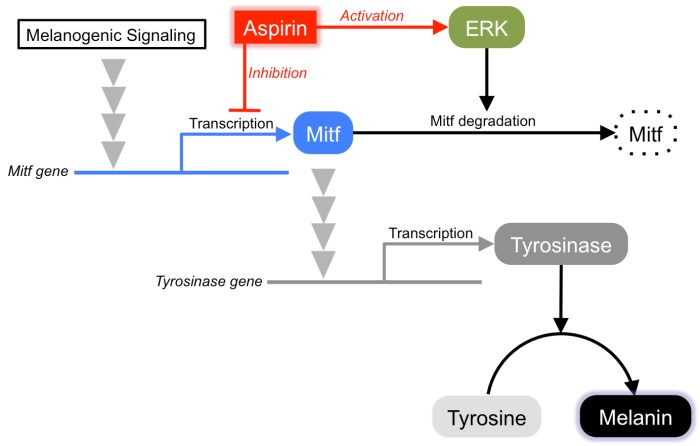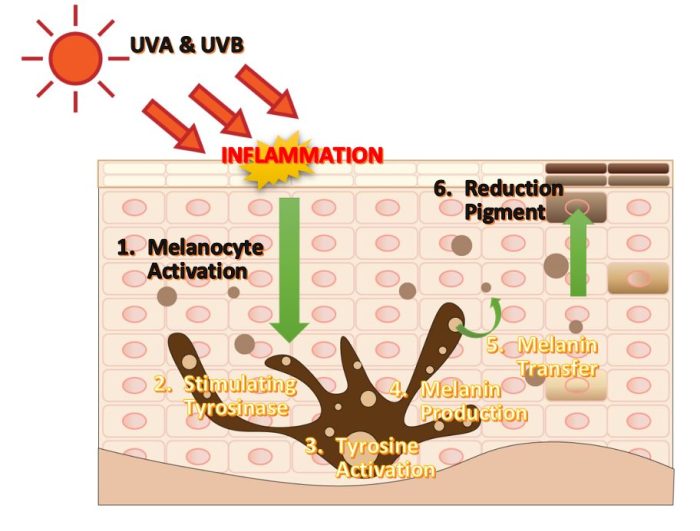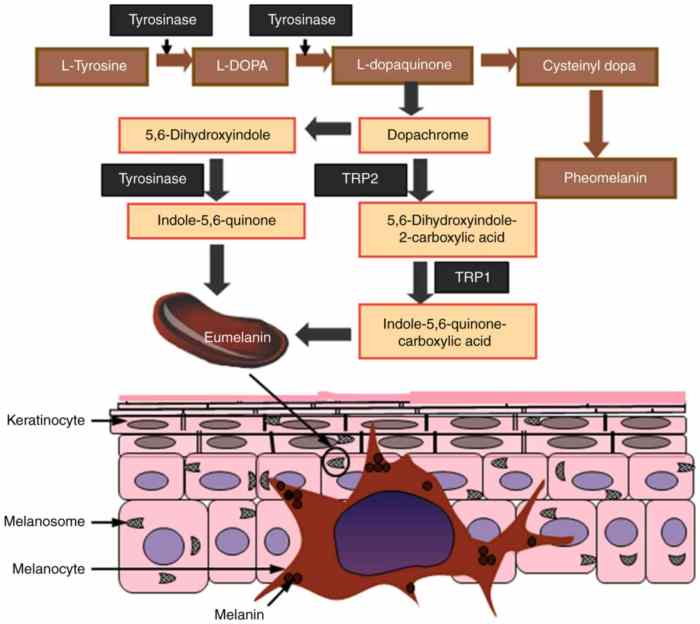What stimulates melanin production milady? This question has captivated skincare enthusiasts and dermatologists alike, as melanin plays a crucial role in determining our skin tone and protecting us from harmful UV radiation. In this article, we delve into the fascinating world of melanin production, exploring the factors that influence its synthesis and the methods used to stimulate it safely and effectively.
Melanin is a natural pigment produced by specialized cells called melanocytes, which are found in the skin, hair, and eyes. It is responsible for the wide range of skin tones we see in humans, from fair to dark. Melanin also acts as a protective barrier against the sun’s harmful UV rays, preventing them from damaging the skin’s DNA and causing sunburn, premature aging, and even skin cancer.
Melanin Production

Melanin is a pigment responsible for the coloration of skin, hair, and eyes. It is produced by specialized cells called melanocytes, which are located in the epidermis, the outermost layer of the skin.
The production of melanin is a complex process involving multiple steps. It begins with the amino acid tyrosine, which is converted to dopaquinone by the enzyme tyrosinase. Dopaquinone is then further oxidized to dopachrome, which undergoes a series of reactions to form melanin.
The amount of melanin produced is influenced by several factors, including genetics, UV exposure, and hormonal factors.
Factors Influencing Melanin Production
- Genetics:The amount of melanin produced is largely determined by an individual’s genetic makeup.
- UV exposure:UV radiation from the sun or tanning beds stimulates melanocytes to produce more melanin, resulting in a darker skin tone.
- Hormonal factors:Certain hormones, such as estrogen and progesterone, can influence melanin production.
Stimulating Melanin Production

There are several methods used to stimulate melanin production:
Natural Methods
- Sun exposure:Controlled exposure to UV radiation from the sun stimulates melanocytes to produce melanin.
- Tanning beds:Tanning beds emit UV radiation, which can also stimulate melanin production.
Artificial Methods, What stimulates melanin production milady
- Melanin-stimulating hormones:These hormones can be administered to increase melanin production.
- Topical melanin-stimulating agents:These agents can be applied to the skin to stimulate melanin production.
It is important to note that excessive melanin production can have potential risks, such as skin cancer and hyperpigmentation.
Safety Considerations: What Stimulates Melanin Production Milady

When considering methods to stimulate melanin production, it is crucial to prioritize safety.
Sun Protection
Excessive UV exposure can damage the skin and increase the risk of skin cancer. It is essential to protect the skin from excessive sun exposure by using sunscreen, wearing protective clothing, and seeking shade during peak sunlight hours.
Artificial Tanning Methods
Artificial tanning methods, such as tanning beds, emit UV radiation, which can also damage the skin and increase the risk of skin cancer. It is advisable to limit the use of tanning beds and avoid them altogether if possible.
Question & Answer Hub
What are the natural ways to stimulate melanin production?
Natural methods include moderate sun exposure, which triggers the melanocytes to produce melanin, and the use of certain foods and supplements rich in melanin-stimulating nutrients, such as tyrosine, copper, and vitamin D.
What are the risks associated with excessive melanin production?
Excessive melanin production can lead to hyperpigmentation, age spots, and an increased risk of skin cancer.
What are the safety considerations when using artificial tanning methods?
Artificial tanning methods, such as tanning beds and spray tans, should be used with caution as they can increase the risk of skin cancer and premature aging.
